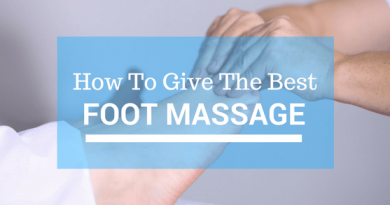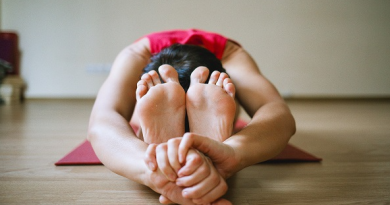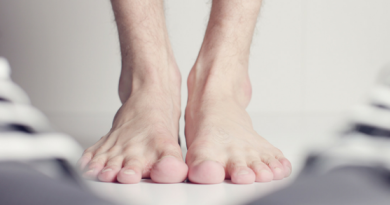11 Quick Remedies to Relieve Foot Pain from Standing All Day
European studies reveal that up to 50% of workers spend more than 4 hours a day on their feet.
And you know what’s worse?
Everytime you walk or stand, your feet absorb as much as three times your body weight!
No wonder workers from diverse industries are desperate to know how to relieve foot pain from standing all day. These include, but not limited to, the following:
- Healthcare workers such as nurses.
- Industrial workers like quality control inspectors, machine operators, and assembly-line workers.
- Retail salespeople and casino dealers.
- Mail carriers.
- Workers in supermarkets and laundering facilities.
- Food services staff (waiters/waitresses).
Considering the long-term impact of standing or walking all day has on your health, it’s your responsibility to take care of your f.
Employers, on the other hand, must be aware of this health hazard and create necessary changes in the workplace.
In this guide, I’ll recommend some of the best methods to soothe sore feet as well as proactive ways to prevent work-related foot pain.
But first, let’s start with the basics…
Why do our feet hurt after standing all day?
The simplest answer is because of overuse.
Do you remember the last time you spent many hours reading or typing on the computer? I bet your eyes and fingers didn’t feel good afterward.
The same thing happens to our feet with only one difference: Our feet carry more weight than any other body part.
Our feet are made up of muscles, joints, tendons, nerves, and blood vessels. When you walk, stand, or run, these parts of your foot anatomy work hard to stabilize you.
If you stand during your entire shift, your body weight compresses the joints in your feet and legs. The blood also pools in these areas, causing inflammation and pain.
Non-stop walking and running can even be more sinister. In every step you make, your heel lands on the floor with a force of 1 ½ to 2 times your body weight.
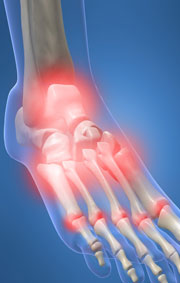
The extent of pain or injury from standing or walking all day can be a lot greater if you have the following:
- Existing foot ailments. Although foot disorders often occur as a result of prolonged standing or walking, they may also exist prior to it and therefore exacerbate the resulting injury. For example, people with plantar fasciitis (or inflammation of the connective tissue supporting the foot arch) before entering their jobs may experience worse symptoms than those with no pre-existing medical conditions.
- Obesity. The more pounds you gain, the more stress you put on the muscles, joints, and connective tissues on your feet.
- Foot abnormalities. People with flat feet, arthritis, or high foot arches are more likely to experience foot pain than those with normal feet.
- Poorly-fitting/high-heeled shoes. Wearing tight shoes may lead to the formation of bunions or corns. For women, wearing high-heeled shoes are known to cause tension in the plantar fascia and pain in the toes and middle of the foot.
What happens if you don’t take care of your feet?
At first, you won’t notice anything unusual beyond your aching feet.
But as time goes by, the pain and fatigue in your feet will spread out like a ripple on a pond.
The closer the body part is to your feet, the more likely it will suffer the same discomfort. Therefore, it’s not unusual to find someone with foot discomfort to also complain of leg pain and inflammation.
As the weight of gravity compresses your feet and every bone and muscles above them, the domino effect starts to kick in. What started as a simple foot pain can lead to more nefarious health issues like the following:
- Neck pain.
- Low back pain.
- Fatigue.
- Plantar fasciitis, heel spurs, and other painful foot abnormalities.
- Varicose veins.
- Arthritis affecting the hips and knees.
The good news is that all of these are preventable.
By learning how to relieve foot pain from standing all day, you can stop simple sore feet from evolving into a full-blown health threat.
How to relieve foot pain from standing all day in 3 simple steps.
After putting in a hard day’s work, the last thing you want to do is go through complicated stuff just to take care of your feet.
A visit to the spa to pamper your feet may also not be an option since you’re too tired to go anywhere.
For this reason, I’ve handpicked some of the most effective remedies and simplified them into three steps so you can relax your feet pronto.
Step 1: Give yourself to a homemade foot spa.
As a general rule of the thumb, use the temperature of your feet to determine whether or not you’ll use a warm or cool foot soak.
If your feet feel warm to the touch, it means you need to give it a cool soak to relieve the swelling and give the cells time to repair themselves. Don’t soak your feet in a warm solution because it can worsen the inflammation.
Meanwhile, if the skin of your feet is cool to the touch, give your feet a warm soak instead.
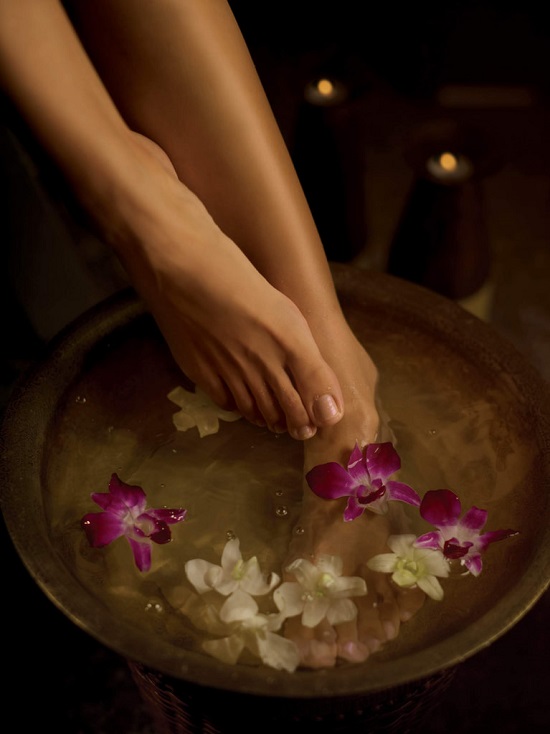
Here’s how to quickly give your feet a simple foot spa at home:
- Get a basin or small tub and fill it with warm or cool water depending on what your feet need (see above). Assuming that you’re too busy to even heat water, I recommend buying a foot spa machine which allows you to bring the water to whatever temperature you prefer in one click.
- Pour about 1 to 2 tablespoons of Epsom salt for every gallon of water. Epsom salt helps relieve inflammation and replenishes your body’s supply of magnesium. You can also add a few drops of your favorite essential oils like rosemary, eucalyptus, or peppermint.
- Soak your feet in the solution for 10 to 20 minutes. Afterward, dry your feet with a clean towel and elevate them for half an hour to further reduce swelling.
In case you’re not in the mood to get your feet wet, you can also buy a gel pack from your local pharmacy. To use it, either put it in the freezer or heat it in a microwave before applying it on your feet.
Step 2: Stretch it out.
After the quick foot spa, you can further relieve the pain from your feet by doing simple stretches.
In addition to easing the pain, foot exercises can strengthen the muscles on your feet to prevent future injuries.
If the foot soak didn’t relieve the pain, you can take painkillers prior to doing the stretches so you can perform them with relative ease.
Here are some simple foot exercises recommended by the Chartered Society of Physiotherapy:
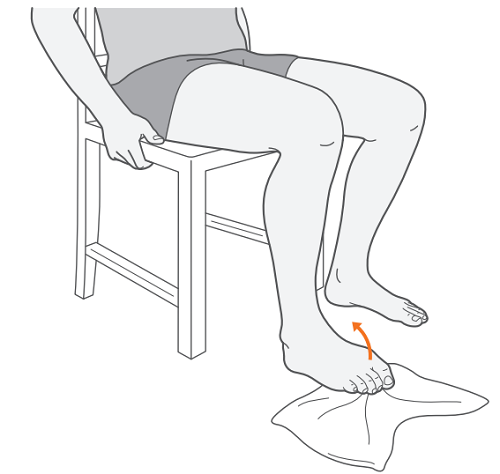
Sit in a comfortable chair and place a towel on the floor.
While keeping your heel on the ground, pick up the towel using your toes. Repeat it 10 to 20 times on both feet.
As you progress, you can add a little weight to the towel like a small bag of beans. Alternatively, you can scatter a few pencils on the floor and use your toes to pick them one by one.
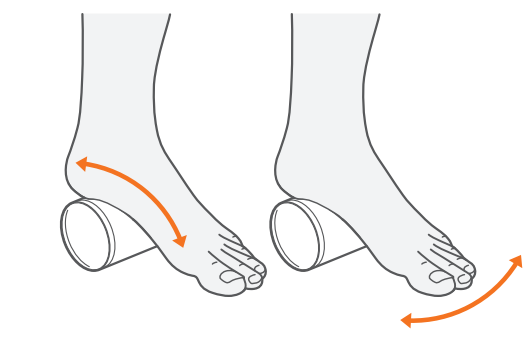
Place your foot over a golf or tennis ball. You can also use a frozen bottle of water if you want a cooler effect.
Roll it over in all directions for a few minutes.
Do it on both feet and repeat at least two times a day.
This exercise massages and stretches your foot arches, providing instant relief from plantar fasciitis.
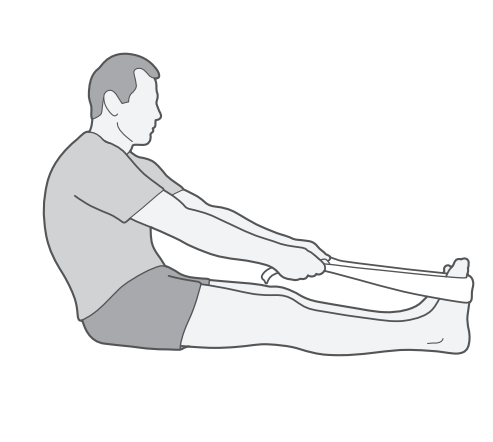
Encircle a towel around the ball of your foot.
With your hands holding both ends of the towel, pull it so the toes are pointed towards the body.
Keep your knee straight and hold the position for 30 seconds. Repeat it three times on each foot.
While sitting, rest your right foot above the left knee.
Find the base of the toes and pull it back towards the body.
Hold the stretch for 15 to 20 seconds before releasing.
Do it at least three times and repeat on the other foot.
Put both of your hands at shoulder level on a wall.
Place one foot forward at approximately 30 cm from the wall.
Bend your front knee while keeping the other knee straight.
Hold this position until you feel a nice stretch or tightness in your back leg.
Repeat it 10 times and then switch the leg positions.
If you find the above stretches too basic, or if your body is yearning for some challenges, you might also want to try foot yoga
Yoga for the feet is a set of poses designed to improve foot stability and release tension from your calves and feet through stretches.
Most importantly, don’t forget to incorporate fat-burning exercises into your daily routines.
The more pounds you shed, the less pressure you put on your feet and legs.
If the foot pain is too overwhelming, you can choose exercises that are less demanding like swimming and other non-weight-bearing exercises.
Follow the stretches recommended above and you’ll be able to ease the pain and recover within 4-6 weeks or as early as 2 weeks.
Step 3: Indulge in foot massage.
Just like any kind of massage, a simple foot rub can release muscle tension, reduce pain, and increase blood circulation to your feet, all of which lead to faster healing.
A few minutes of foot massage also allows you to check for any changes in your feet.
Diabetic patients, for instance, suffer from foot numbness due to nerve damage (neuropathy). For this reason, they may be unaware of existing wounds or cuts which can easily lead to infections.
You can enjoy foot massage in two ways:
Special attention should be given to your plantar fascia which runs the length of the arch from the ball of the foot to the heel. This area serves as a shock absorber everytime your walk or run. It’s the most common source of heel pain when it gets inflamed (a condition called plantar fasciitis).
If you want a deeper massage, use your knuckles and press it against the foot arch. Don’t forget to pull your toes one by one or spread them apart to release tension in these areas.
b. Foot massager.
Available in specialty health stores, foot massagers are simple, affordable machines which allow you to massage your feet at a click of a button.
Most of them come with built-in heat, rotating massage nodes, and vibration to help relax your foot muscles anytime and anywhere.
Foot massager is an ideal gadget for those who are too busy or whose hands are too weak to give a simple foot massage. Interestingly, some foot massagers are designed to massage not only the feet but also the calves, another problematic area for those who stand or walk all day.
To help you find the best foot massager that suits your needs and budget, check out this comprehensive buying guide we’ve written for you.
How to prevent or relieve sore feet while at work.
Having sore feet after a 12-hour shift isn’t uncommon.
However, you can significantly reduce pain and prevent future complications if you know how to take care of your feet even while at work.
If you want to know how to stop your feet from hurting, I recommend the following remedies:
1. Change your shoes.
The older your shoes are, the less effective they are in absorbing shock and protecting your feet from the stress of walking or standing.
Before you shop for a new pair of shoes, try to get the exact measurement of your feet. This way, you won’t end up with shoes that are either too tight or too loose.
If possible, choose laced shoes over slip-on varieties as the former is more stable and allow you to choose how your shoe fits.
Lastly, choose shoes that offer adequate arch support, firm grip for the heel, and enough wiggle room for your toes.
The heels should be at least ¼ inches high. Flat soles or heels that are higher than 2 inches will only worsen the foot pain.
2. Stand on an anti-fatigue mat.
For those who spend hours at work standing, there’s a type of padding that can help reduce the impact of the concrete floor on your feet and legs.
Also known as “anti-fatigue” mats, these squishy paddings provide a more comfortable surface that can help you stand longer while minimizing the pain that comes with it.
Take note that these are different from anti-slip mats which are designed to avoid accidents on slippery surfaces but not necessarily to reduce feet and leg fatigue.
However, some anti-fatigue mats have non-slid features ideal for slippery environments such as kitchens.
When choosing an anti-fatigue mat, know about its lifespan. Since the frequent use of this mat makes it more vulnerable to wear and tear, it’s important to consider how long it will last which can be anywhere between 1 and 10 years depending on its quality.
Moreover, take note how easy it is to clean the mat and whether or not it comes with sloped edges.
Remember, you’ll be standing on this mat most of the time, so the easier it is to clean it, the better. The sloped edges, meanwhile, prevent people from tipping over the mat and make it easier for medical carts (if you’re working in the hospital) to roll over it.
3. Use orthotics or insoles.
Shoe inserts are like anti-fatigue mats placed inside your shoes.
Their goal is to make your feet more comfortable inside the shoes (insoles) or to correct overpronation (orthotics).
Insoles can change the fit of your shoe. Hence, to avoid discomfort, it’s better to buy new shoes and insoles together.
Orthotics are recommended for people who have overpronation. The support they provide to your arches prevents the development of flat feet and plantar fasciitis.
Talk to your podiatrist to determine the best insoles or orthotics for your feet.
4. Sprinkle some powder inside your shoes.
Baby powder or cornstarch not only keeps feet moisture–and bad odor–at bay. They also cool your feet and provide a little lubrication to your feet’s pressure points.
As a result, you are less likely to experience sore feet even after a whole day of walking or standing.
5. Wear compression socks.
Popular among nurses, compression socks are a special type of socks with a precise tightness that allows them to push the blood from the feet and legs back towards the heart.
The improved circulation means more cells in your feet will be repaired and rejuvenated.
Paired with the right shoes that fit you, compression socks can stop foot pain even before it happens.
6. Maintain good posture.
When you’ve been standing for hours on end, it becomes too easy to lose grip of your posture and push your body off balance. When this happens, your weight won’t be equally distributed on your feet, resulting in soreness.
To prevent prolonged standing from messing up with your posture, avoid leaning back and put 60% of your weight on your toes. It’s also recommended to stretch once in a while and keep your hips relaxed.
7. Shed some pounds.
Gravity is always at work whether you’re standing or walking. The heavier you are, the more burden you put on your lower back, legs, and feet.
Shedding a few pounds can lift this burden off your feet and give your foot muscles time to relax and recover.
If you still feel pain on your feet at the slightest movement, you can take painkillers and then do more non-weight-bearing exercises like swimming.
8. Alternate walking and standing with sitting.
By installing a sit/stand stool in the workstation, employees will be compelled to change from standing to sitting position whenever their feet and legs get tired.
In places where employees aren’t allowed to sit due to productivity issues, alternating standing and walking are a good alternative. Walking triggers the leg muscles to pump blood, resulting in improved circulation which benefits the feet.
The use of a 6-inch tool where you can rest your feet is also recommended. While standing during their shifts, workers can opt to elevate either one of their legs and rest it on the stool. This helps relax tired leg muscles and keep the blood pumping.
When should you seek medical help for sore feet?
If your foot pain persists or becomes more frequent even after following the tips listed above, it’s time to see your doctor. Your GP can refer you to a podiatrist who is trained to diagnose and treat specific foot disorders.
Furthermore, don’t hesitate to visit your doctor if you have symptoms and pre-existing medical conditions like the following:
- Numbness or tingling sensation on the feet (associated with diabetes)
- Gout
- Plantar fasciitis
- Persistent swelling of the feet and legs (can be related to cardiovascular diseases)
- Autoimmune diseases like rheumatoid arthritis (RA)
Wrapping Up.
Relieving foot pain from standing all day is equal parts prevention and equal parts treatment.
There are specific ways to relax your feet after work, but preventive strategies you can do while at work can be just as effective, if not more.
In the end, foot pain is your body’s way of telling you that there’s either something wrong with your feet or body as a whole. Never take it for granted.
To get more information about your condition and how to recover from it using conventional methods, please talk to your doctor or be referred to a podiatrist.


